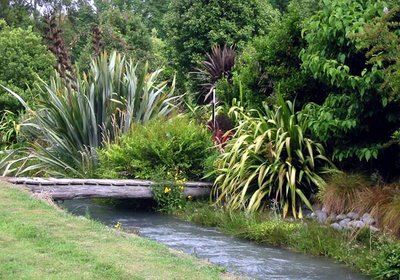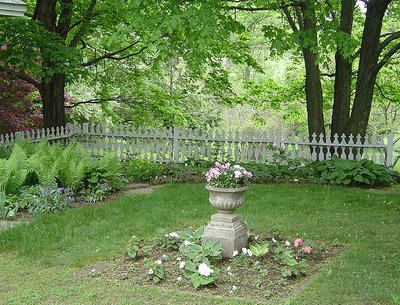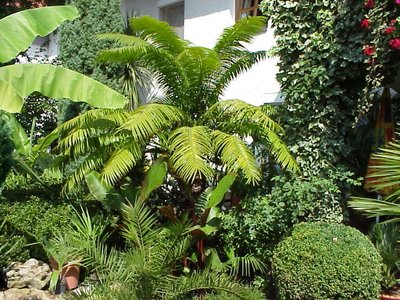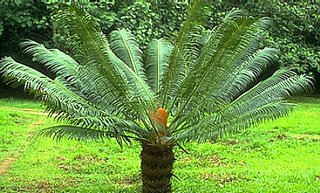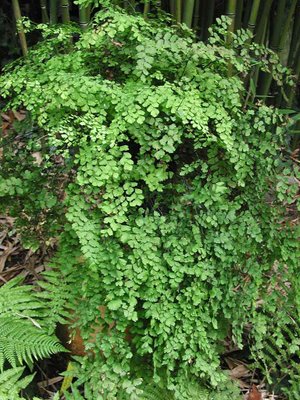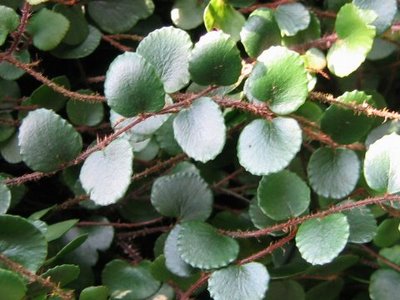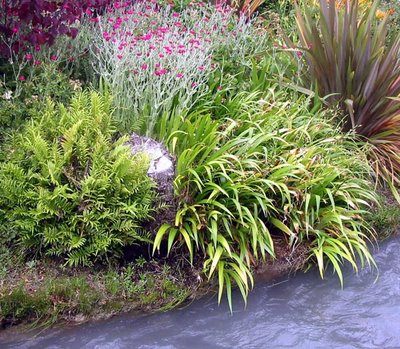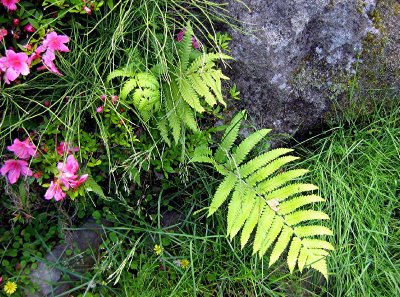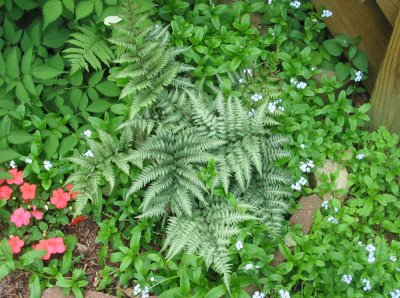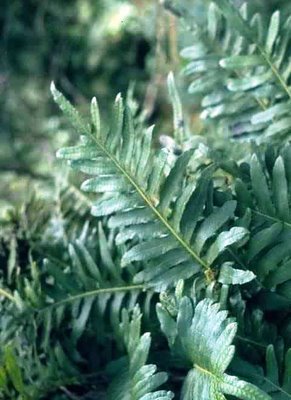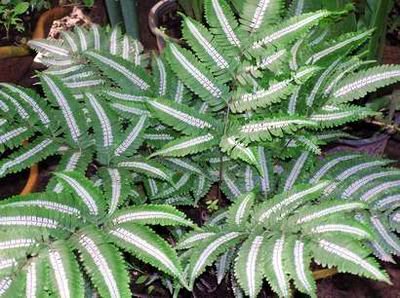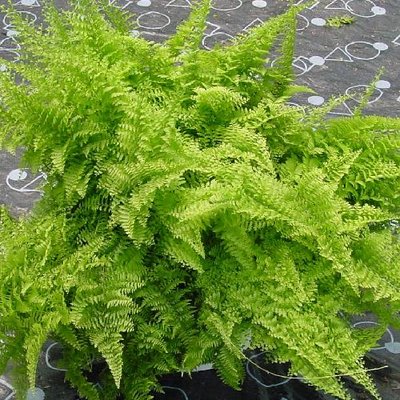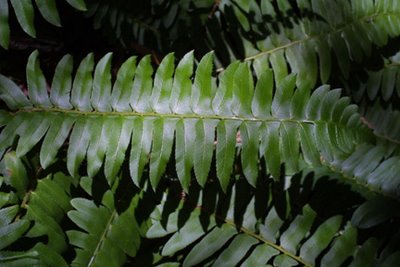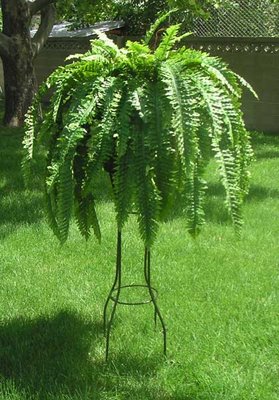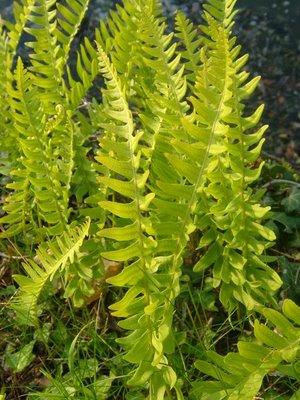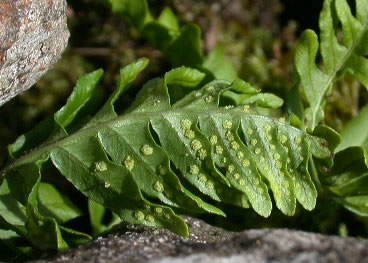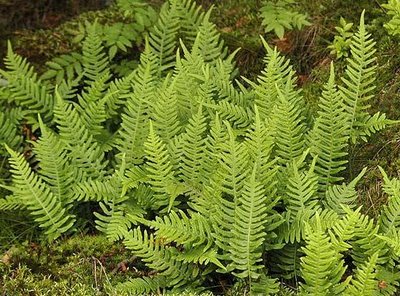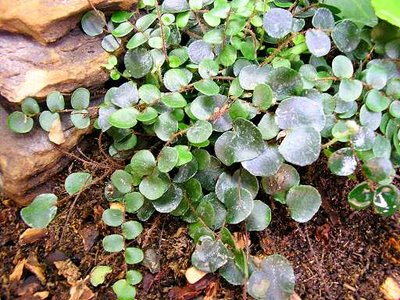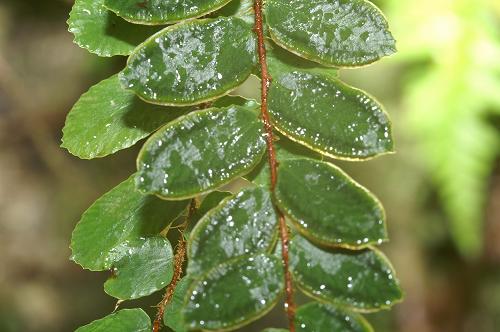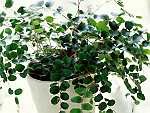 Common Name: Boston FernScientific Name: Nephrolepis exaltata
Common Name: Boston FernScientific Name: Nephrolepis exaltata
Scientific Classification
Kingdom Plantae
Division Pteridophyta
Class Pteridopsida
Order Polypodidales
Family Davalliaceae
Genus Nephrolepsis
Species N. exaltata The Boston fern (Nephrolepis exaltata) is a species of fern in the family Davalliaceae (sometimes treated in the families Nephrolepidaceae or Oleandraceae), native to tropical regions throughout the world. It is a common in humid forests and swamps, especially in northern South America, Mexico, Central America, Florida, the West Indies, Polynesia and Africa.
The fronds are 50-250 cm long and 6-15 cm broad, with alternate pinnae (the small "leaflets" on either side of the midrib), each pinna being 2-8 cm long. The pinnae are generally deltoid, as seen in the picture to the right. The pinnate vein pattern is also visible on these highly compound leaves. The edges appear slightly serrate.
The Boston Fern has a great history of being one of the Victorian parlor room tropicals.
It originates from tropical and semi-tropical regions of the world. Often covering rain forest floors, it quickly spreads. It can be used in landscapes as great fill-in and backdrops for smaller annuals.
Ferns, in general, thrive in rich humus soil, partial shade, and high humidity. The Boston fern is no different.
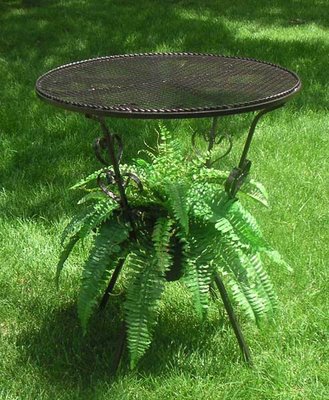
Cultivation and uses
The Boston fern is a very popular house plant, often grown in hanging baskets or similar conditions. It is a perennial plant hardy in USDA plant hardiness zones 9-11. Although the fern may appear totally dead due to frost, it wi
ll re-emerge in the spring. In general, the Boston Fern likes damp, but not soggy soil that is rich in nutrients. Of the common cultivated ferns, the Boston Fern is the most tolerant to drought. The fern thrives best in humid conditions, so when grown as a house plant it becomes necessary to mist the plant when relative humidity falls below around 80%. Although outdoors this plant prefers partial shade or full shade, inside it grows best in bright filtered light. This plant is usually propagated by division of the rooted runners, as named cultivars will not come true from spores.
Some cultivars have become naturalised in Florida.
 Special Tips
Special Tips
Propagation can be done from spores, runners or by division.
Clay pots are an excellent way to grow the plant.
Misting is ideal for it creates the tropical and semi-tropical conditions that the plant loves best.
Pay close attention for aphids, mealy bugs, or the red spider. Do not use pesticides for they are a tad strong on ferns. Use soap and water, drenching and repeating the process several times.

